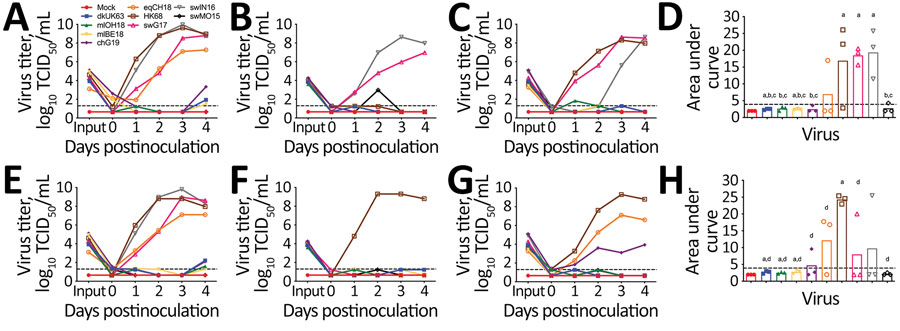Volume 29, Number 1—January 2023
Research
Human Immunity and Susceptibility to Influenza A(H3) Viruses of Avian, Equine, and Swine Origin
Figure 4

Figure 4. Replication kinetics of influenza A(H3) viruses of different species in human airway epithelia (MucilAir; Epithelix Sàrl, https://www.epithelix.com). Tissues were infected with viruses at a multiplicity of infection of 0.01 TCID50, and supernatants were collected at different days postinfection for virus titration in MDCK cells. A–C) Virus replication in nasal tissue of donors ND1 (A), ND2 (B), and ND3 (C). D) Virus yield in nasal tissues. E–G) Virus replication in bronchial tissue of donors BD1 (E), BD2 (F), and BD3 (G). H) Virus yield in bronchial tissues. Virus yield in panels D and H was determined by calculating the area under the curve at 1–4 dpi; letters indicate significant differences (p<0.1): mock (a), swG17 (b), swIN16 (c), or HK68 (d). Black dashed lines represent detection limit. Complete isolate names are provided in [[ANCHOR###T2###Table 2###Anchor]]. TCID50, 50% tissue culture infectious dose.